If you are looking to grow and harvest an incredible crop of delicious tomatoes this year from your garden, raised beds or container tomato plants – it all starts with keeping your plants strong and healthy right from the start!
There is little doubt that healthy plants produce lots of great-tasting tomatoes. But when it comes to growing tomatoes, keeping disease, plant issues and pests away can often be a difficult challenge.
Let’s face it, nothing is more depressing than to watch your tomato plants struggle. Whether it’s from blight, blossom end rot, mildew, or simply a lack of available nutrients or moisture in the soil.
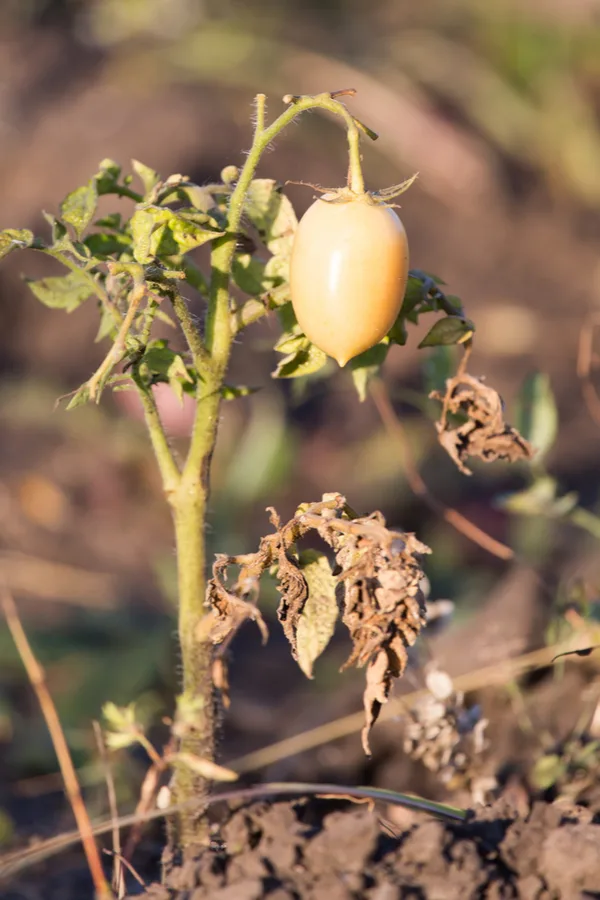
Unfortunately, plants that grow weak don’t only under perform, they also become an easy target for pests to attack and destroy. The downward spiral can not only lead to total plant failure, but a whole lot of frustration for the gardener too!
The good news is that armed with a few simple tips and secrets, you can eliminate all of the above issues, and in the process, grow some pretty amazing tomatoes. With that in mind, here is a look at 6 simple tips to keep your plants vibrant and strong all year long.
6 Simple Tips To Grow Healthy Tomato Plants
#1) Rotate Where You Plant Your Tomatoes
If you do nothing else to help your tomato plants, give them a new space and place to grow this year. Growing tomatoes in the same garden space or in the same container soil year after year is inviting disaster.
Tomatoes are one of the most susceptible vegetable plants to soil-borne disease. And by planting your tomatoes repeatedly in the same soil space, it makes it easy for tomato blight and other diseases to take hold. And once they do, they can stay in that soil for 5 years or more!
By rotating where you plant every year, you instantly minimize the potential for blight and disease. If you grow in containers or pots, that means changing out your soil every year too.
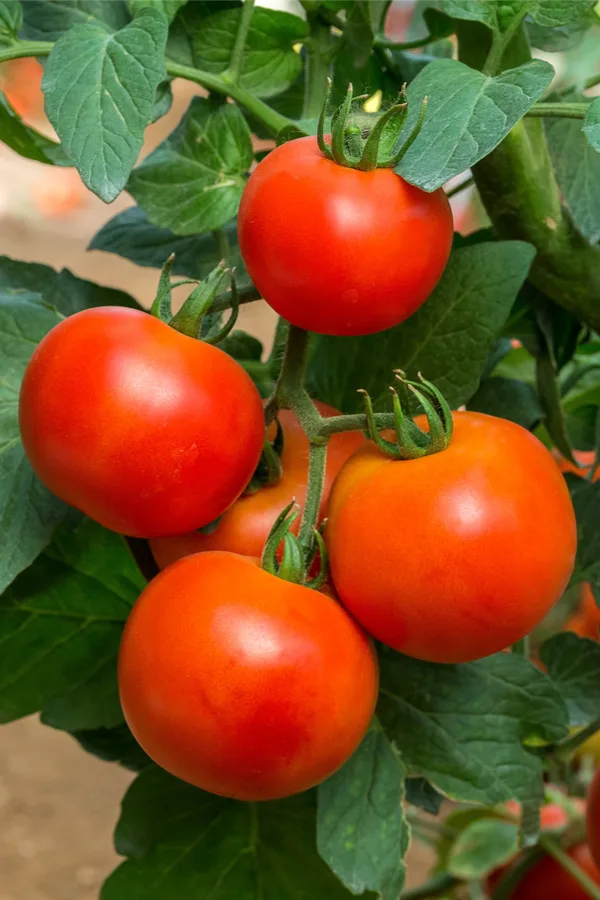
For garden or raised bed spaces, try to never grow tomatoes in the same space for a minimum of 3 years. Four or five years is even better. Not only does it help protect against disease, it also can keep pests at bay too.
When plants occupy the same space, pests can establish a home in the soil right below. And when they do, they can come back easily to tear into your plants ever summer. Planting in new areas and soil also gives the tomato plants a fresh supply of nutrients to draw from as well.
#2) Start Them Off With A Calcium Boost – How To Grow Healthy Tomato Plants
Black rot and blossom rot are two of the most common tomato issues gardeners face. Both are caused by a lack of calcium in the soil, or the plants inability to draw up calcium from the earth below.
Rotating crops will help alleviate this issue as it gives plants new, more fertile soil each season. But to really solve the issue, it’s best to add even more into your soil as you plant.
As the egg shells dissolve into the soil, they provide much-needed calcium to the roots of the tomatoes, eliminating black rot and blossom rot. As you plant your tomatoes, add in the pulverized shells of two to three egg shells for each and every plant.
Crush the shells as finely as possible, mixing it into the hole as you plant. And to boost your plant’s health even more when planting, add in compost, coffee grounds and worm castings too.
All of these will help with your plant’s health and power their early growth. See : How To Use Egg Shells To Power Your Garden, Flowerbeds & More
Listen In To Our Podcast On Growing Tomatoes Below!
#3) Mulch Your Plants – How To Grow Healthy Tomato Plants
Think mulching your tomato plants is only to help prevent weeds? Think again!
Mulching your tomato plants not only helps keep competing weeds from stealing valuable nutrients from your tomato crop, it also helps to regulate soil temperature and retain moisture for the roots.
Even more, it can add another layer of protection against soil borne disease. The spores that cause blight can live in the soil below. And when it rains or you water, that soil can easily splash up on the leaves. But with mulching, you reduce or even eliminate the problem entirely.
We use a combination of compost and straw as our mulch, making sure to not leave any soil bare for at least 18″ around each plant. The compost leaches nutrients below to the tomato plant’s roots, and the straw helps protect the rest of the open soil area.
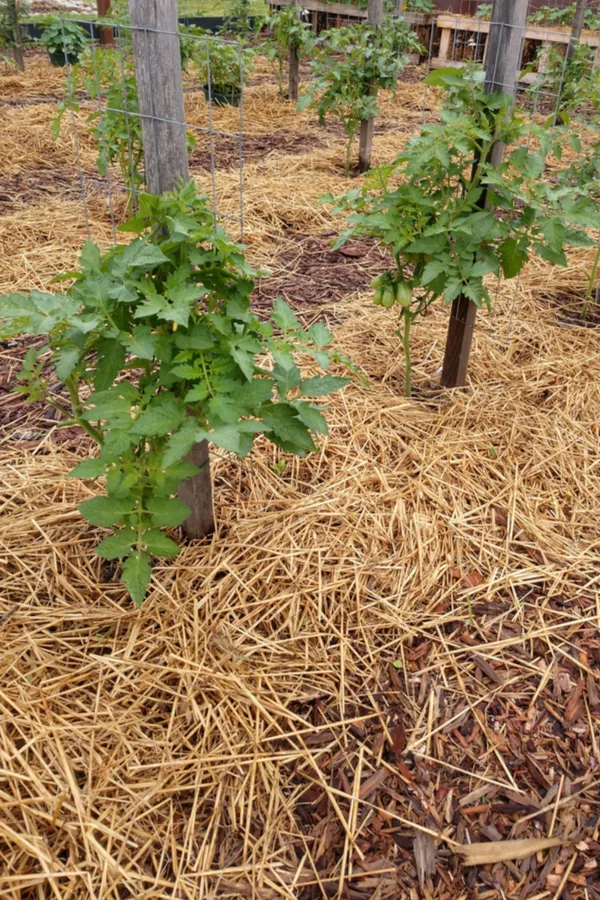
#4) Prune Your Plants As They Grow – How To Grow Healthy Tomato Plants
Believe it or not, pruning your tomato plants as they grow can help keep them healthy, strong, and most importantly, productive!
As your plants grow, keep the bottom of each plant trimmed up to at least 6″ above the soil line. This allows light and circulation to reach the interior of the plants. This is a huge help in keeping mold and fungal disease at bay.
Keeping foliage from being near the ground is also another great way to protect against blight spores from splashing up on your plants. Finally, pruning also makes it harder for crawling and climbing insects to find a ride up onto the plants.
Low foliage on the plant can make fore easy access for all kinds of tomato pests. See Our OWG Article : How & Why To Prune Your Tomato Plants
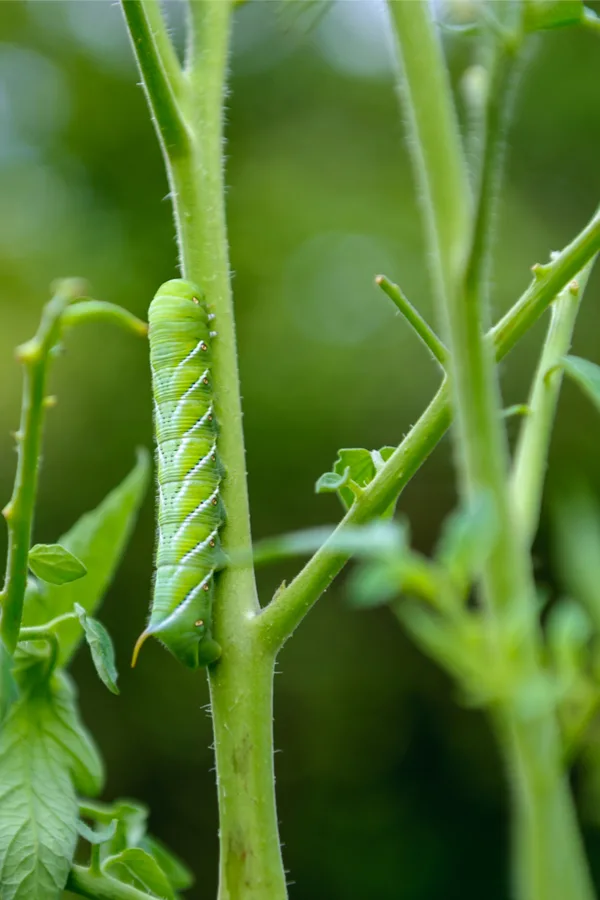
When pruning, always remove any foliage that shows signs of injury or disease – even if they are not on the bottom of the plant. This can keep disease from spreading. It also helps the plant from wasting its energy and resources on repairing broken stems and branches.
#5) Boost Your Plants With Fertilizer – How To Grow Healthy Tomato Plants
No matter how strong your soil might be early in the growing season, your tomato plants can quickly deplete that soil of nutrients. Unfortunately, when the soil runs out of energy, so will your plants.
The compost around your plant’s base will help, but additional power is even better. One of the best ways to fertilize tomato plants naturally is with compost tea. Made from just water and compost, it can be applied as a liquid to the roots and leaves of plants.
You can also use a good quality organic liquid fertilizer as another option for additional nutrients. There are some great all-natural liquid fertilizer options on the market. A few, like Espoma Tomato Plant Food, are even created with powering tomatoes in mind.
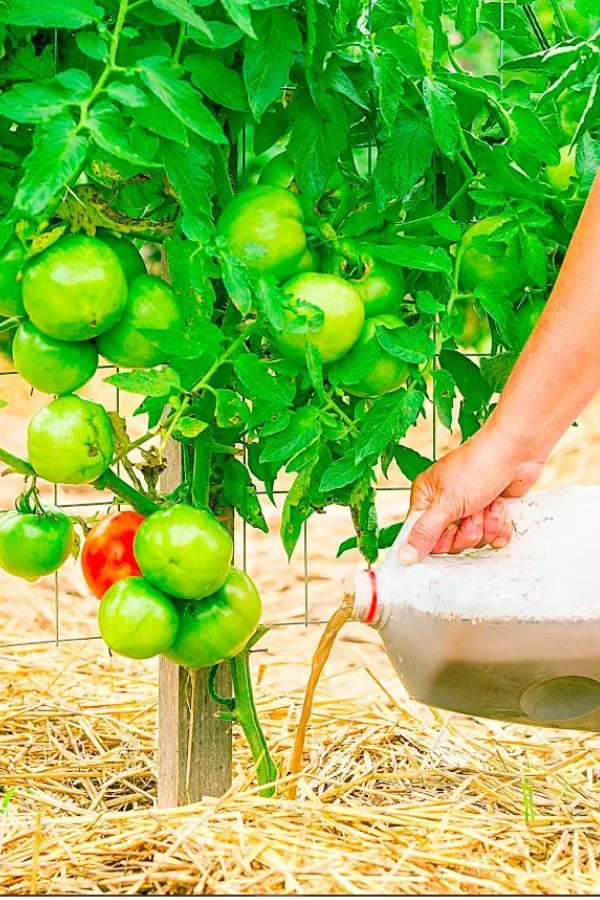
For best results, fertilize your tomato plants lightly every two to three weeks for the first twelve weeks. It is better to supply them regularly with a slightly weaker dose than a single big dose or two. See : How To Best Fertilize Tomato Plants
#6) Clear The Plants When The Season Ends – How To Grow Healthy Tomato Plants
And finally, one of the most important tasks to keep your garden and future tomato plants healthy is to make sure you clear out your tomato plants (and all vegetable plants) at the end of each growing season.
Allowing old plants to over-winter is inviting disease and insect problems to take hold in the garden soil. Pull up your plants as soon as they are done producing – roots and all. As for the compost pile, it is really best to leave out your tomato plants.
There is simply too much chance to pass on disease when composting. We actually burn ours in our fire pit to kill off any spores, bacteria or insects, and then add the ashes to our pile. This process also eliminates hundreds of volunteer tomato seeds from coming up in our compost the following year.
Here is to keeping your tomato plants healthy this year, and to growing an amazingly delicious harvest! Happy gardening, Jim and Mary.
Jim and Mary Competti have been writing gardening, DIY and recipe articles and books for over 15 years from their 46 acre Ohio farm. The two are frequent speakers on all things gardening and love to travel in their spare time.
As always, feel free to email us at thefarm@owgarden.com with comments, questions, or to simply say hello! You can sign up for our free email list in the subscribe now box in the middle of this article. Follow us on Facebook here : OWG Facebook. This article may contain affiliate links.
